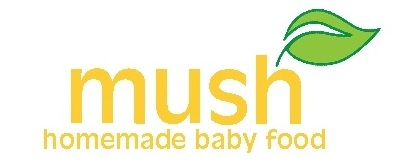As this blog generally surrounds making home baby food, the following post does the same, but gives another alternative. Baby-led weaning (BLW) is a way in which we can introduce foods to babies that requires less preparation, but perhaps a bit more diligence. While the name may sound like it is a way to top a baby from breastfeeding, it is not. Of course, with the introduction of any solids, we do start the “weaning” process, but, nutritionally, it is important that for the first year the main nutritional source is breast milk for a nursing baby (or a baby receiving pumped milk).
Once a child is beginning to show signs of desiring solid food, has the ability to move the tongue appropriately, has teeth, a pincer grasp, etc, solid food can be given. While some may introduce mushed baby food between 4-6 months of age, BLW is better with an older child, almost never before 6 months.
Baby led weaning is about introducing foods to a baby that a baby can feed themselves. This way, the child is able to stop when full, and also physically decide how and when to eat. Yes, this can be messy(er), but it also means less preparation. If you’re eating healthy food at home, not adding a bunch of salt, then when you’re eating may be a possibility as some of their early foods.
Common first foods are sliced avocado, slightly teamed carrot chunks, mango, a bit ripe banana or pear or other softer fruit). However, if you start when a baby already has teeth, other common foods are apples, sliced toast, broccoli, or other food that is suitably sized.
Once baby has a good idea of how to go about feeding themselves, most of what you’re otherwise eating can be given to baby. Be sure you’re supervising baby appropriately. If you’re going to be distracted, be safe – don’t walk away when you give your baby that first sample of toast or other “hard” food. Instead, grab the camera, and watch your baby enjoy food! If they aren’t interested, cut back for a week and try again. This can also beneficial for when you’re out and about – much easier to hand baby some of the veggies off of your plate, than to try to maneuver the jars while you’re out at a restaurant or visiting friends and family.
Many do still follow the general idea to not introduce too many new foods at once. However, you will notice that many who even “dabble” in BLW, choose to forego many of the early grains. Nutritionally, breast milk on demand, according to the World Health Organization should cover all the nutrients for a baby’s first year. There may be concerns about iron, but once a baby starts solids, they should still receive the milk they were before for that first year. Any solids should be practice for the mouth muscle, actions, as well as that lovely palate.
If you give BLW a try, don’t feel like you have to only do BLW, there’s no 100 percent way to feed your child, just something that works for your family and is nutritionally complete
Click the link below to check out a video of Amanda's son Rohan eating his first foods using Baby Led Weaning:
http://www.facebook.com/l/ff200tHblkZixJeGI3ccgYvxz0g/www.attachedresources.com
About the Author: Amanda is mom to vivacious Viveka, her 3 year old who taught her about life, and 11 month old Rohan, who with his VBAC entry to the world, healed her: Both keep her smiling daily in Arizona, where she and her husband, Ravi live. In her spare time, she works full time as an analyst, moderates forums for attached parents, and posts on her blog at http://www.facebook.com/l/8f161QMj30r8umW6TG3WI9phlgQ/www.attachedmoms.com


No comments:
Post a Comment